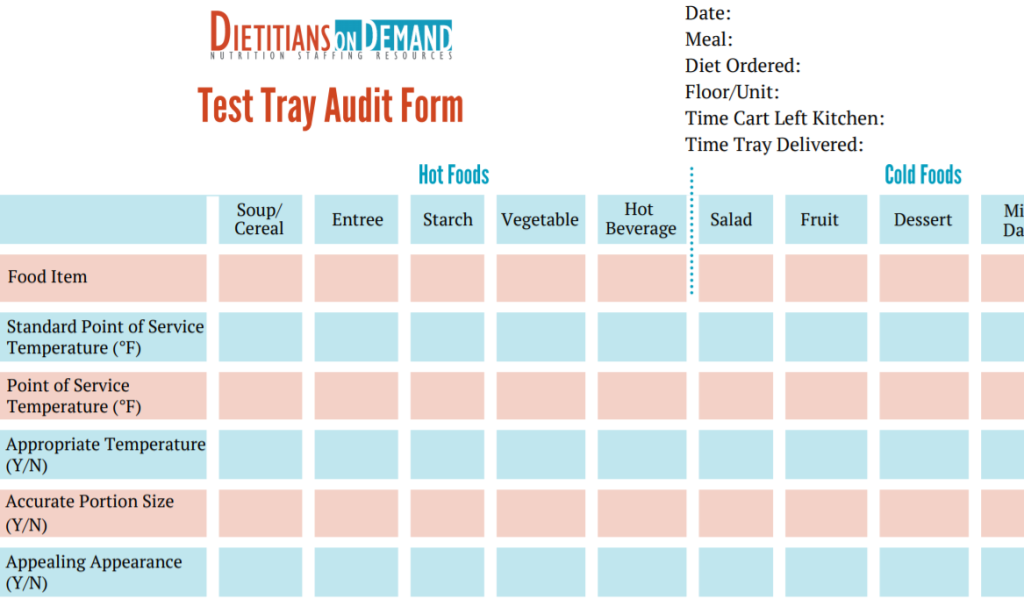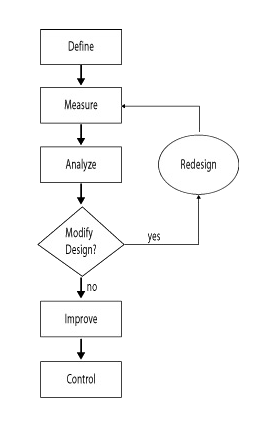Dietitian Blog, Long-Term Care, MNT Guidelines | Jun 8 2021
How completing test trays can benefit your facility

If you are a practicing dietitian, you have definitely completed your fair share of test trays. And at times, the meaning behind completing these audits may be a little unclear as they are often done on an inconsistent and disorganized basis.
The overall purpose of a test tray audit is to evaluate the quality of a meal during a normal meal service and identify any areas for improvement. If done correctly, there are quite a few potential benefits such as:
- Systematically identify quality improvement issues and use results as a reportable quality performance indicator.
- Investigate complaints or reported issues with meals or specific menu items
- Objectively and subjectively score/rank meals and menu items
Here are five tips for optimizing how you complete test trays at your particular facility and why this is important.
1. Develop a form for testing
This is a vital step to ensure that the audit is as thorough as possible. If you Google ‘test tray audit form’ over 2 million results come up. Although this is a great way to get an idea of what other facilities are doing out there, it is important to take the time to make yours as personal to your facility as possible.
Sit down with the director of your department (if it is someone separate from you) to get their opinion on the form. Think of things that are issues, or ‘areas for improvement’ at your facility and develop a form around that.
For example, if you think there is a delay with when trays get passed out to the patients, have a space where you can put the time when the tray cart gets delivered, and then another space where you can put the time when the trays start to get passed out by nursing staff. That way you are able to see if there is a long wait, or a possible discrepancy between times.
Here is an example of a standard test tray form:

It is also important to decide who is going to be completing the test tray forms. I would recommend you (as the facility RD) complete a good majority, but have other dietary staff members complete the audits as well. Another set of eyes is always a good idea to make sure the audit is as complete as possible.
2. Be consistent
As far as a recommended amount, there is no ‘magic number.’ Pay attention to your facility. If you seem to be having a lot of issues revolving meals and meal service it may be helpful to complete the audits as often as possible. See if you are able to complete one audit per week.
Sometimes starting with a minimum number of audits, such as once a month, is a great way to see if you are first able to meet the minimum, or possibly even do more. Just make sure whatever the number of audits, be consistent in getting them done.
The more consistent you can be with completing the audit, the easier it will be to see if a problem is a more isolated issue, or if it is more widespread. And the whole point of the audit is to conduct it ‘unannounced’ so to speak, so make sure if you do set specific dates/times, only the person conducting the audit knows that information.
3. Be as thorough as possible
It is important while completing the test trays, to make sure you are filling them out completely. I have seen so many test tray forms only filled out with the hot food temperatures, but the cold foods and beverages are just as important.
I know it may seem like a hassle to physically open a milk carton and take the temperature, but the temperature, along with other information can help determine a root cause to a problem. And make sure to audit different meals (i.e. breakfast, lunch, dinner).
Lastly, remember the test tray is not only about temperatures, but also the appearance, portion size, and taste of the meal. So go on, take a bite, and ask yourself, “Is this a meal I would like to receive if I were the patient?”
4. Keep audit forms/data organized
I have seen many different ways of organizing the audit form themselves as well as the data contained within the form. First, decide who will be in charge of keeping track of the information. Then develop a system, whether it is a file folder, scanning them into PDF format and keeping them on a specified folder, or creating an Excel Spreadsheet.
It can also be helpful to separate the data out into weeks and/or months.
5. Use the data to make improvements
Once you have gathered all of the data from the test tray audits, it is important to decide how to use those results. One strategy I have used in the past is using a process called DMAIC — an acronym that stands for Define, Measure, Analyze, Improve, and Control. DMAIC is a data-driven quality strategy used to improve processes.
It is represented in five phases that make up the process:

- Define the problem, improvement activity, opportunity for improvement.
- Measure process performance.
- Analyze the process to determine root causes of variation, or poor performance (defects).
- Improve the process by addressing and eliminating the root causes.
- Control the improved process and future process performance.
The overall goal of the conducting test tray audits is to find ways to improve the patient dining experience by identifying problems and then resolving them.
Dietitians On Demand is a nationwide staffing and recruiting company for registered dietitians, specializing in short-term, temporary and permanent-hire positions in acute care, long term care and food service positions. We’re dedicated to dietitians and helping them enhance their practice and excel in the workplace. Check out our job openings, request your coverage, or visit our store today!
Who we are
Dietitians On Demand is the nationwide leader in providing dietitians with jobs they love. If flexibility, competitive pay, a full benefits package, free CPEUs each month and a team dedicated to dietitians sound good to you, apply to our positions today.




